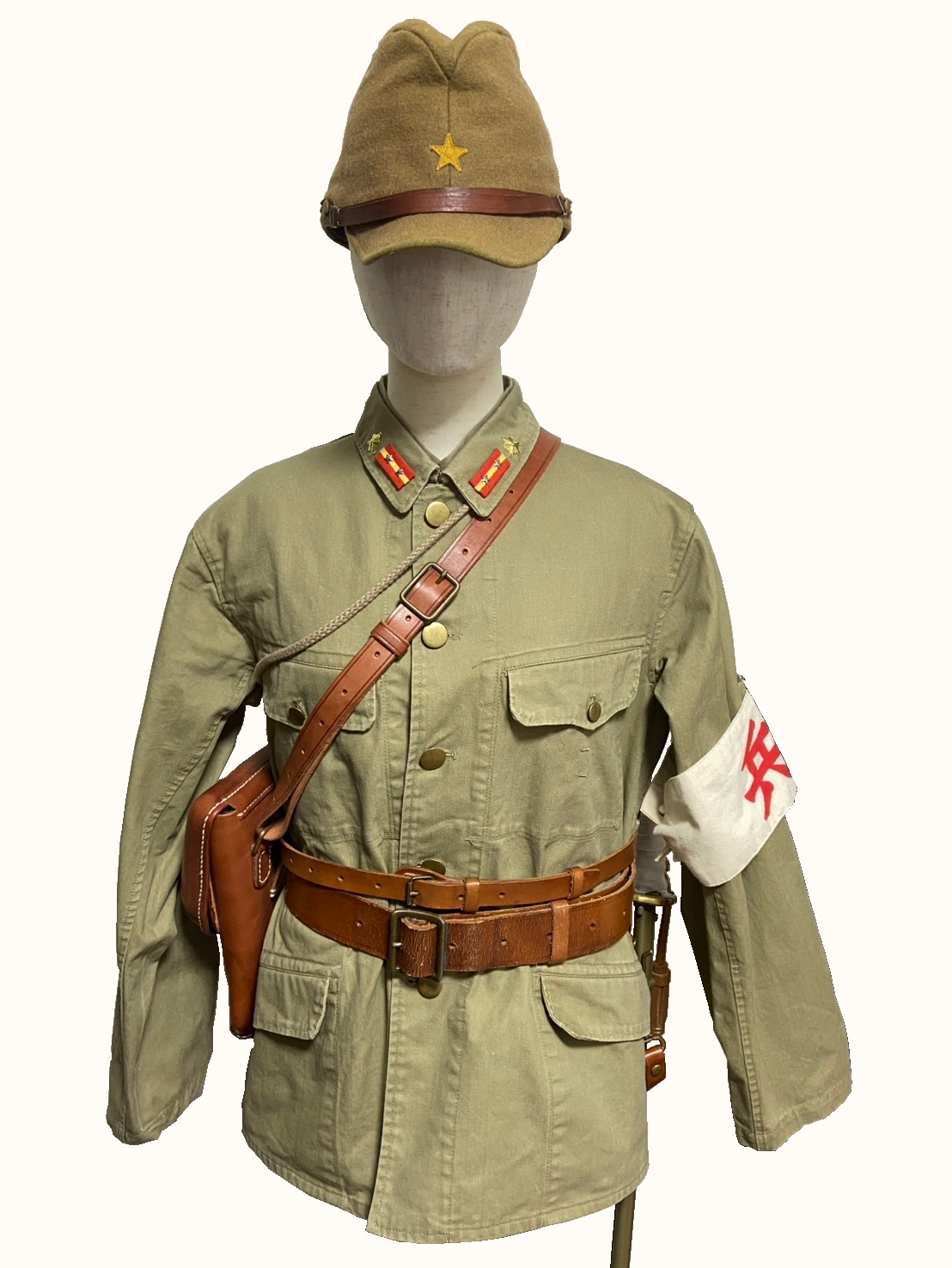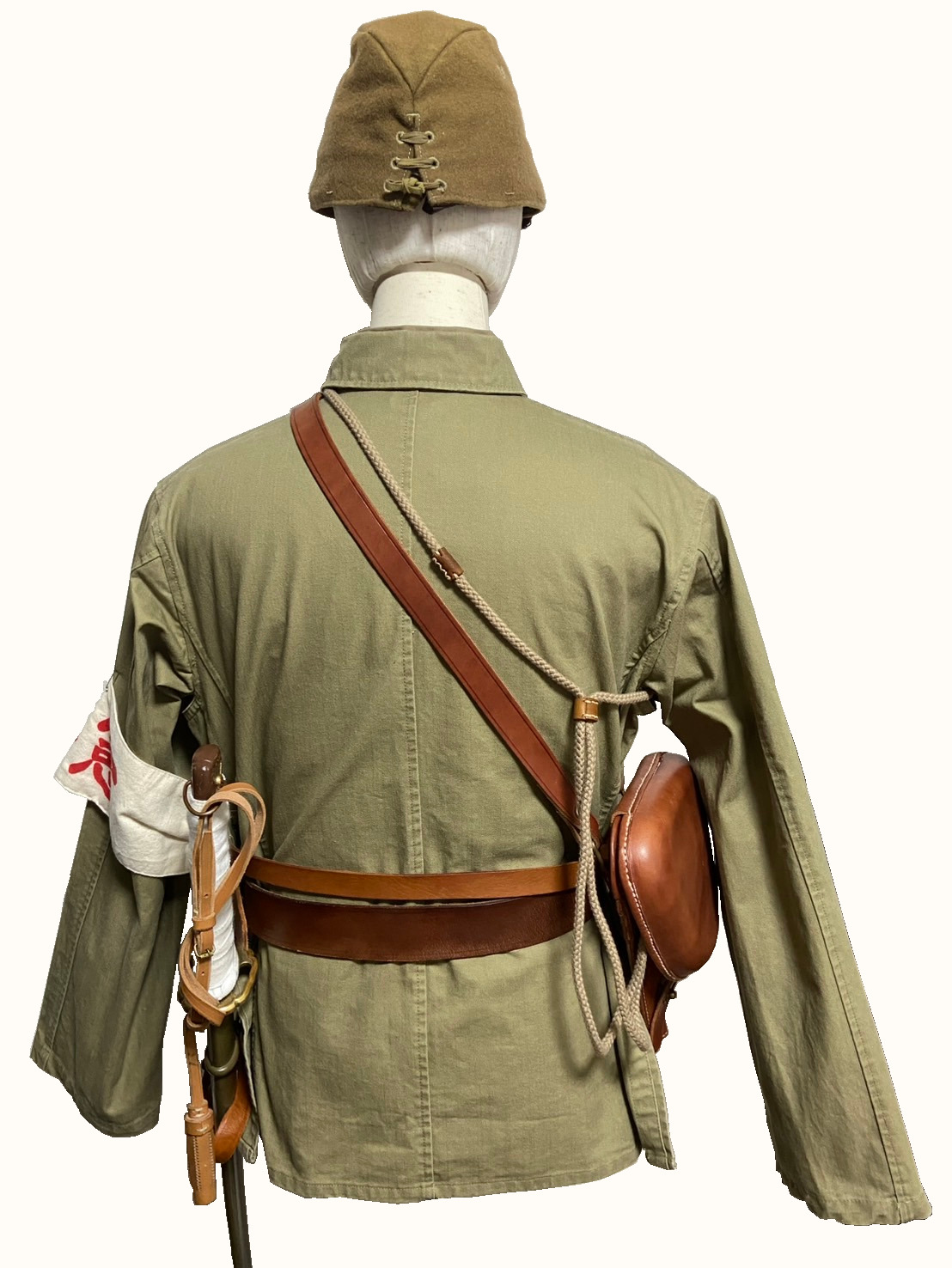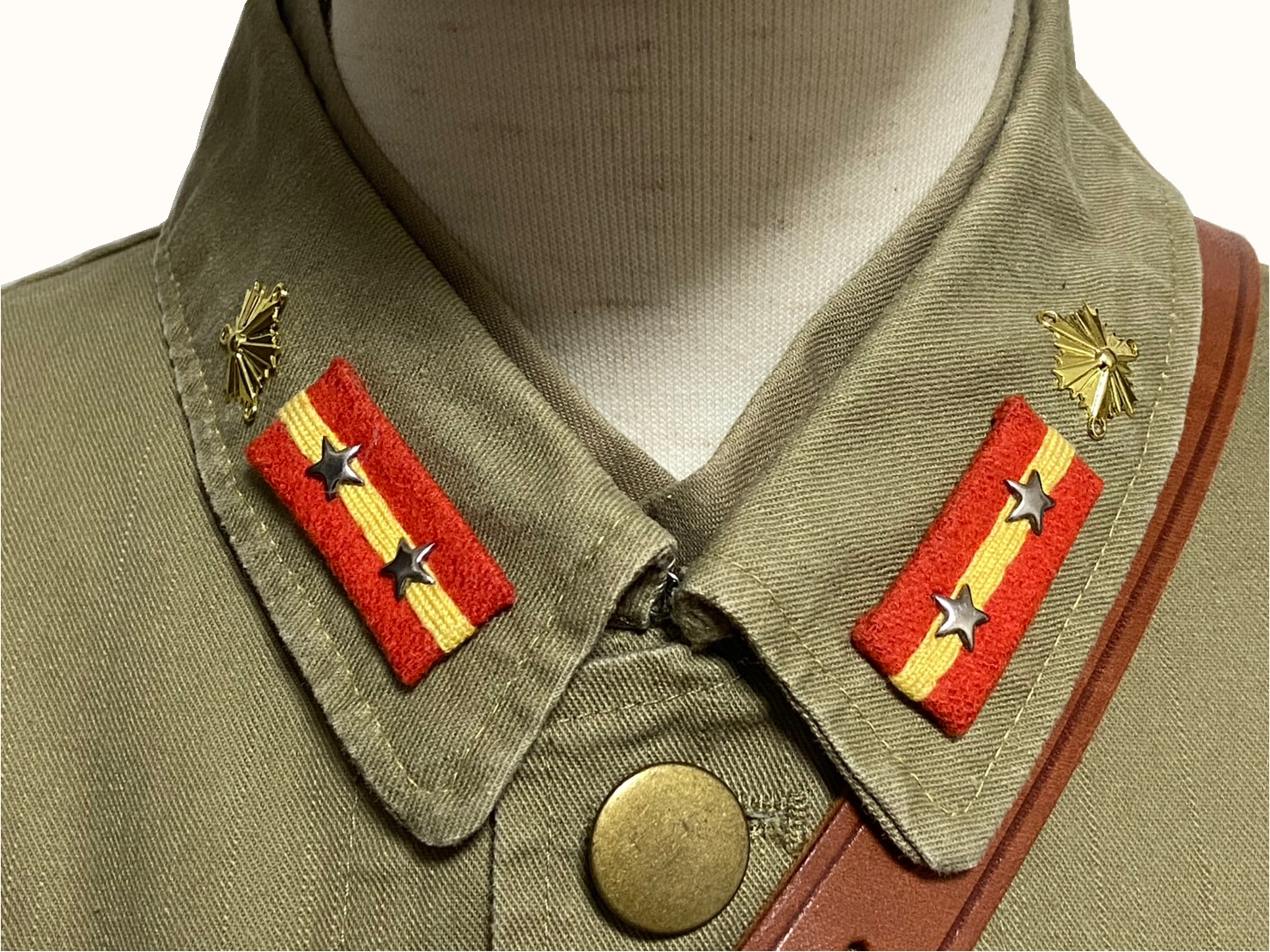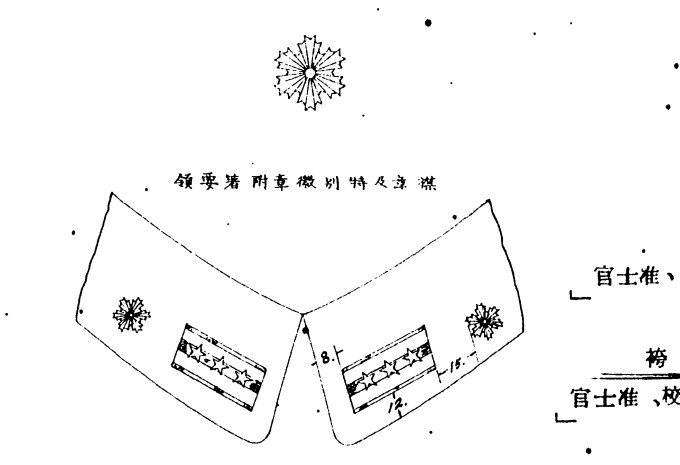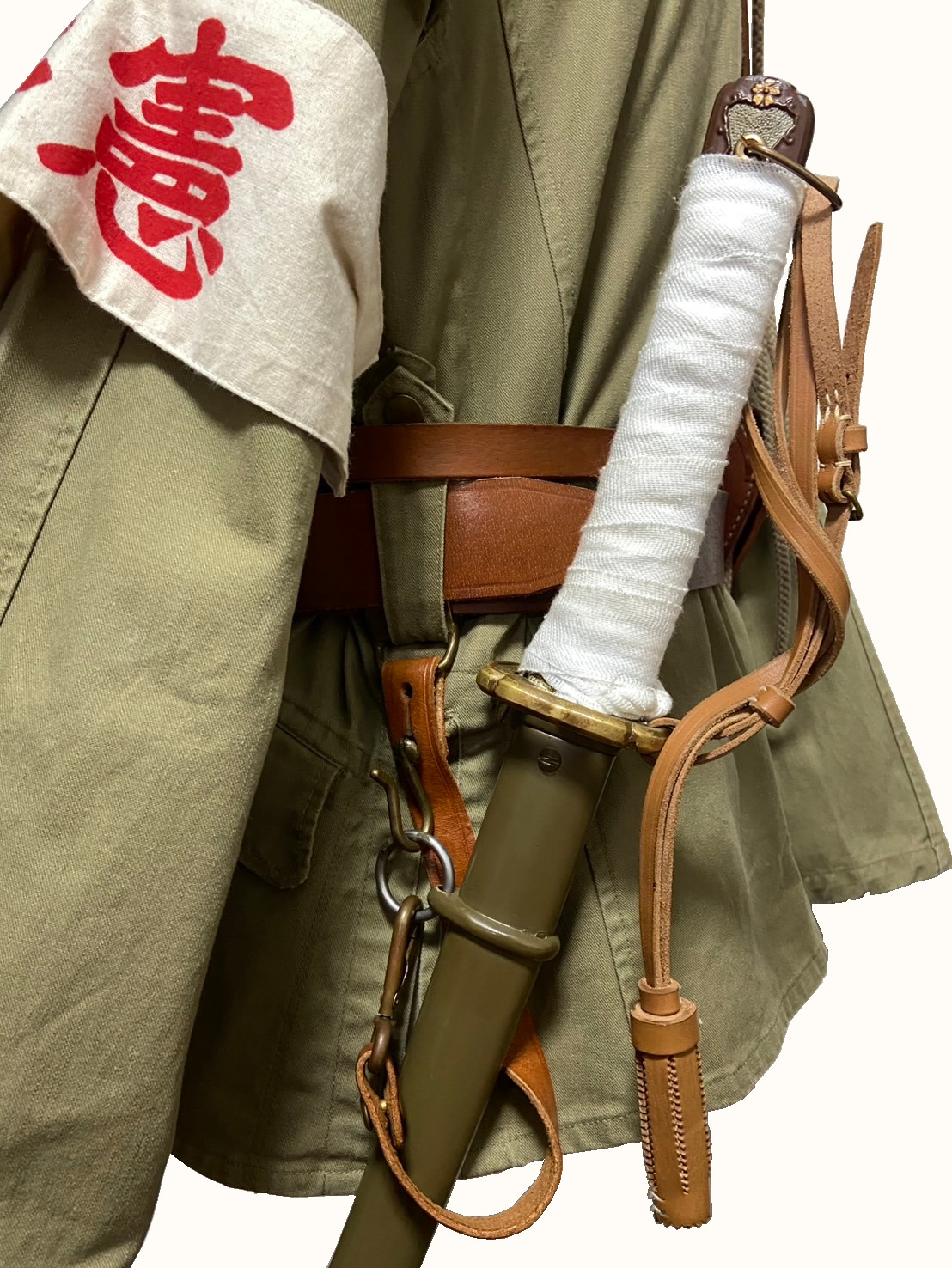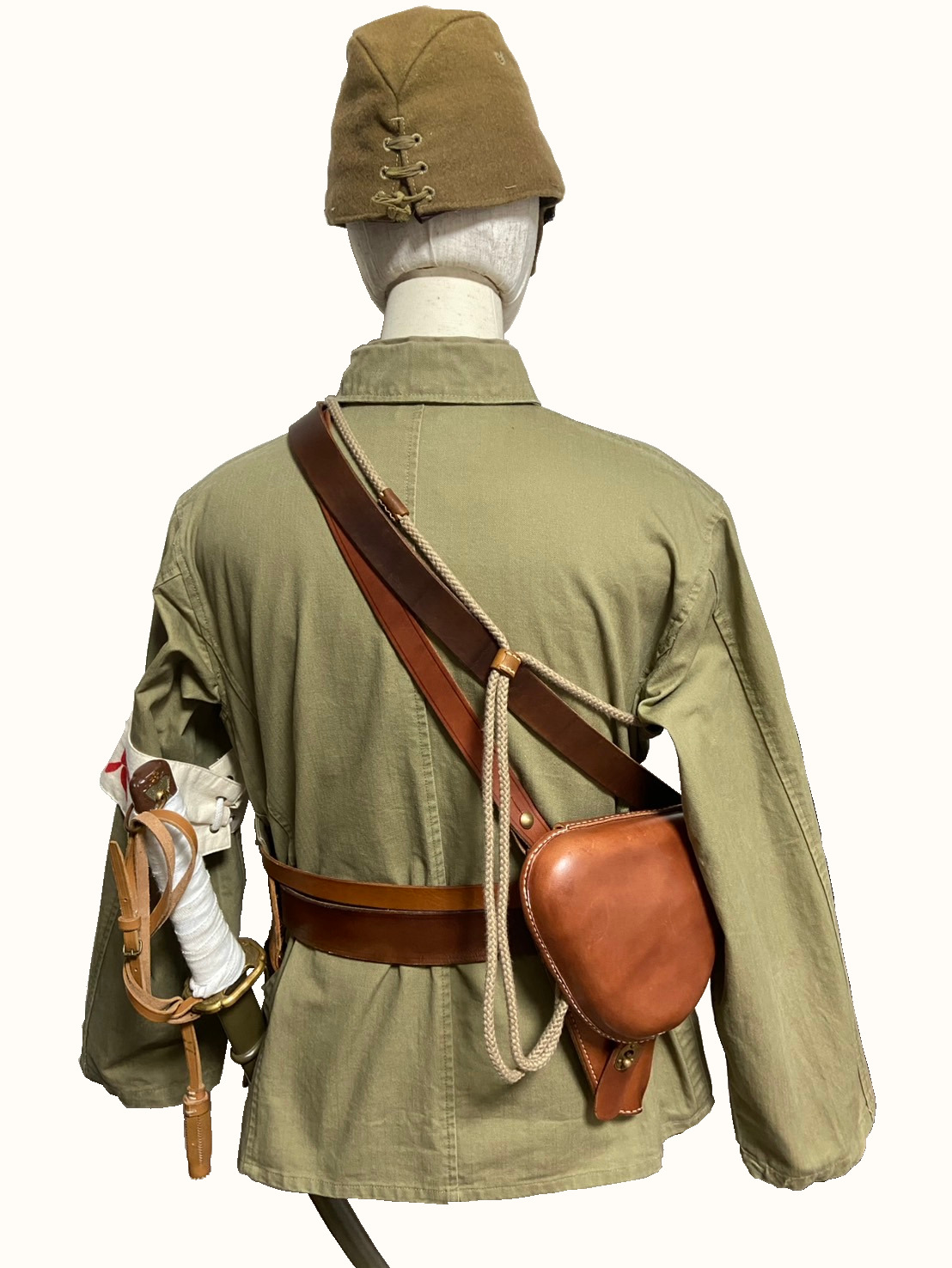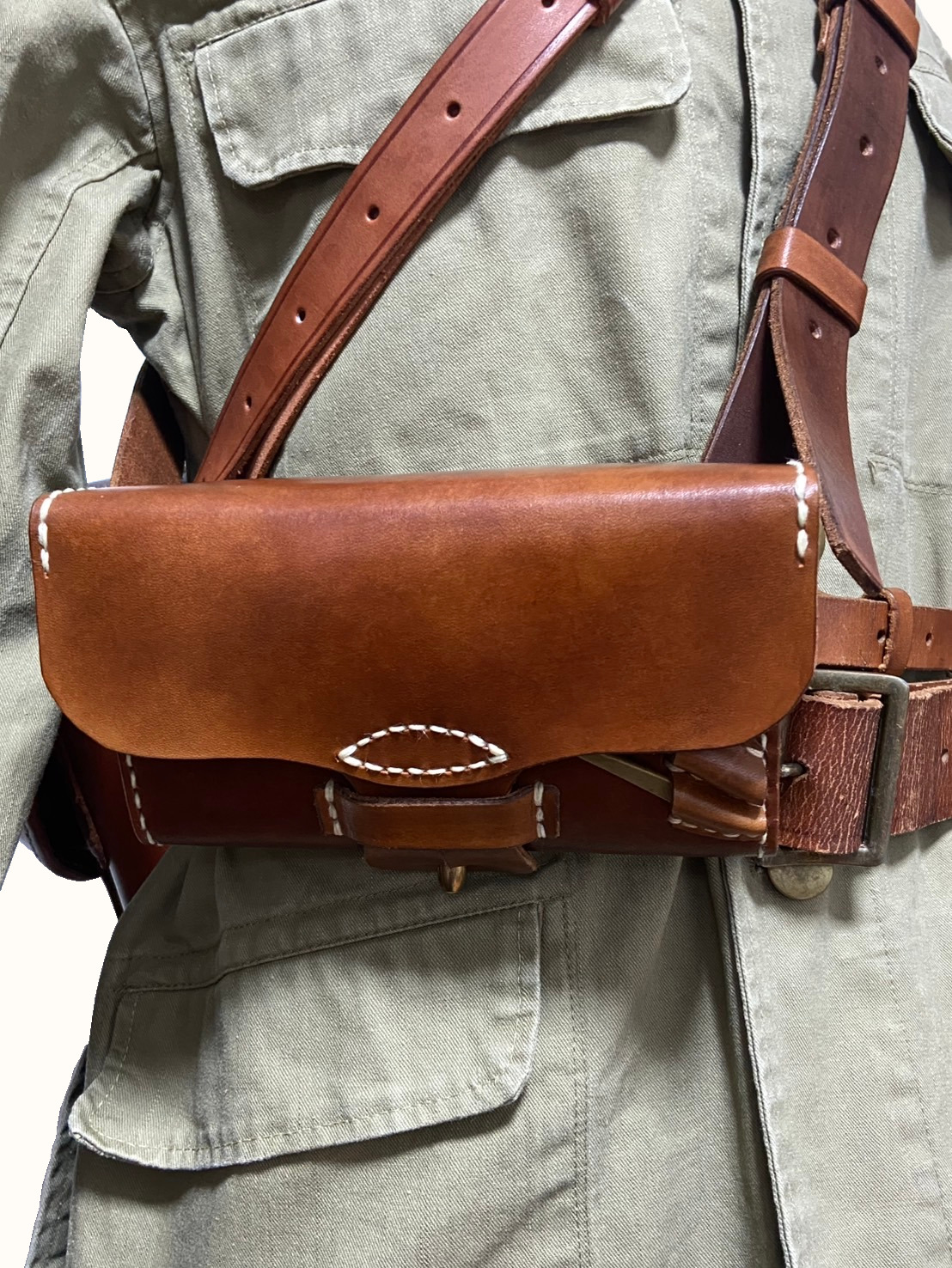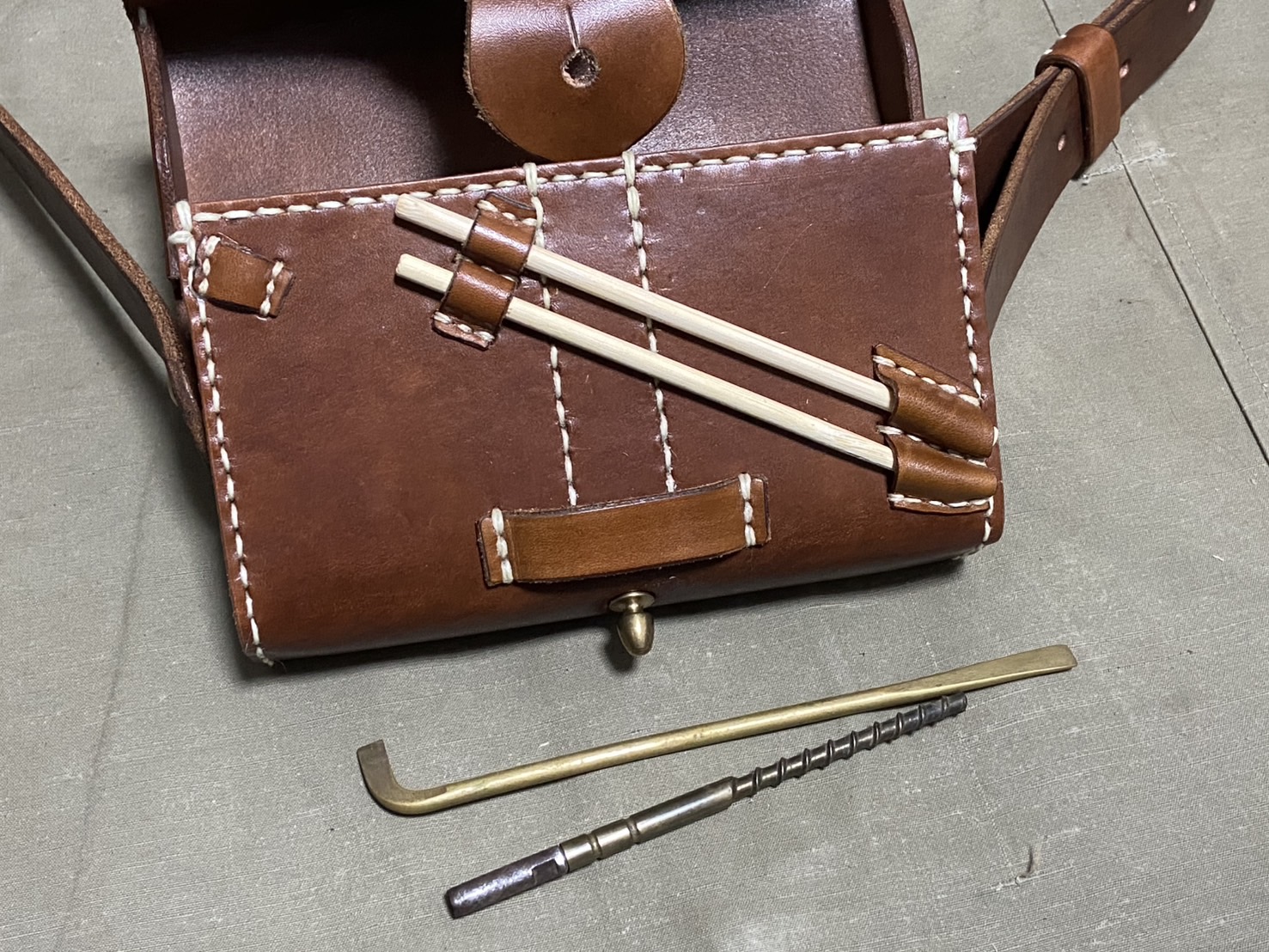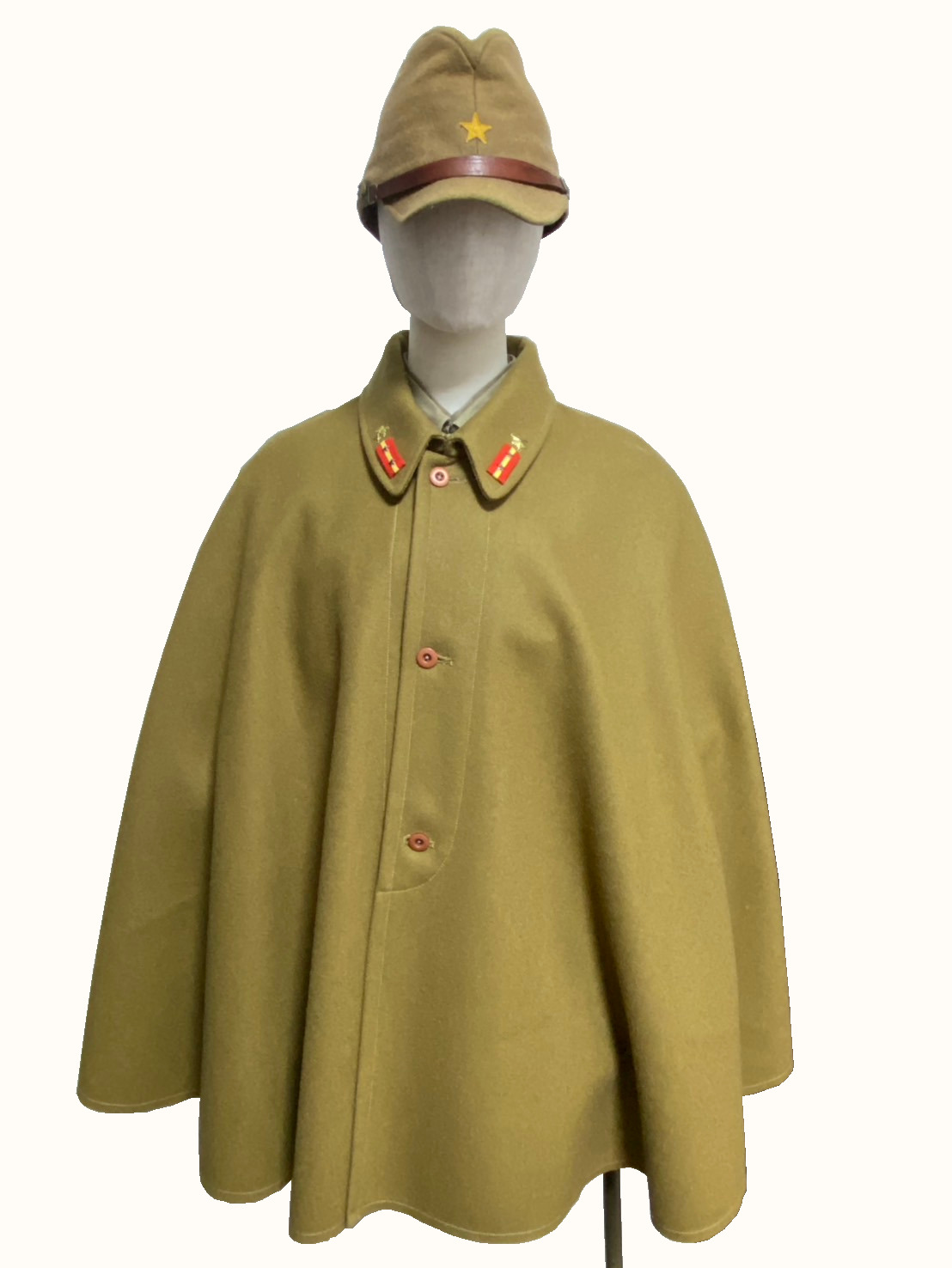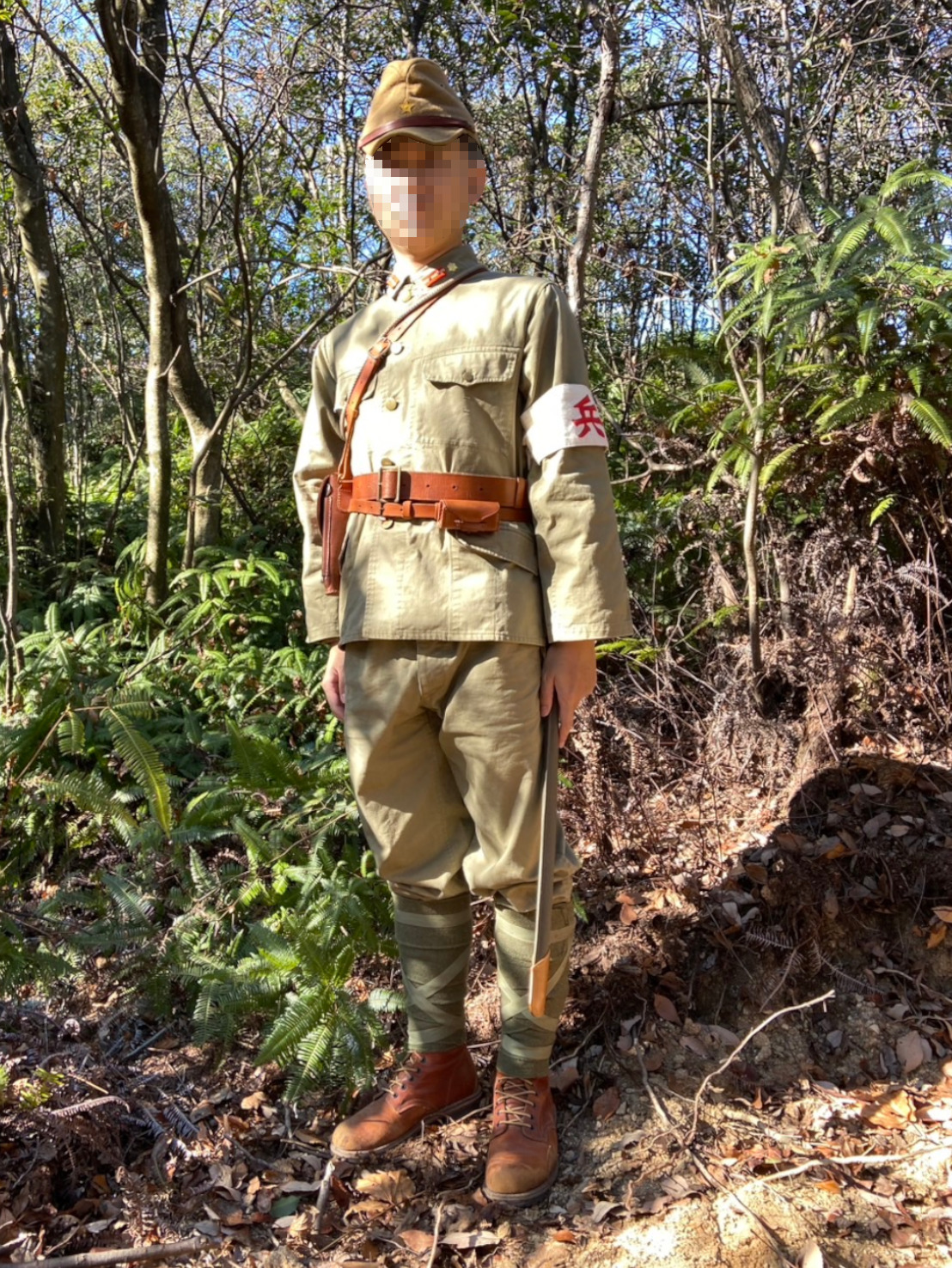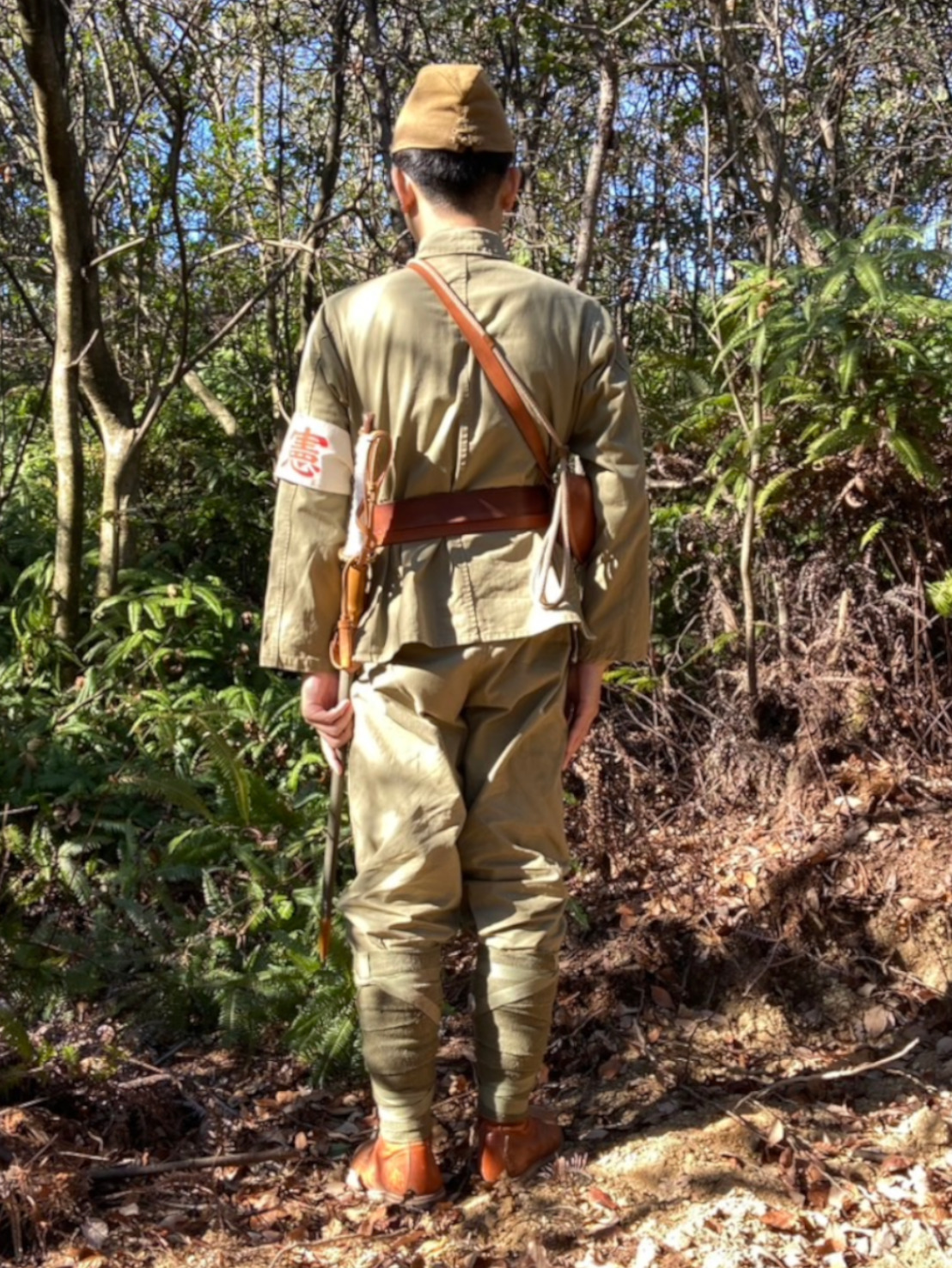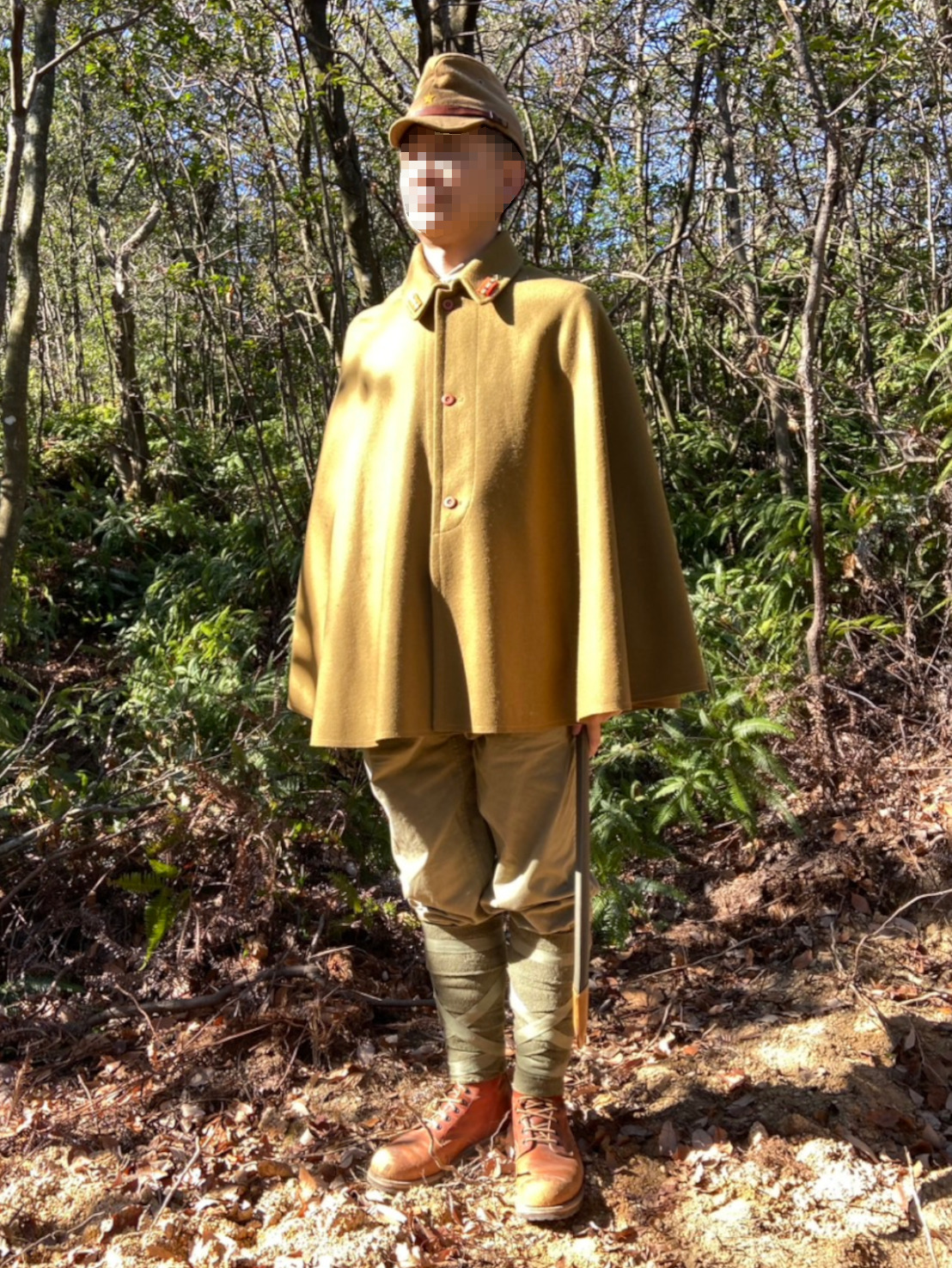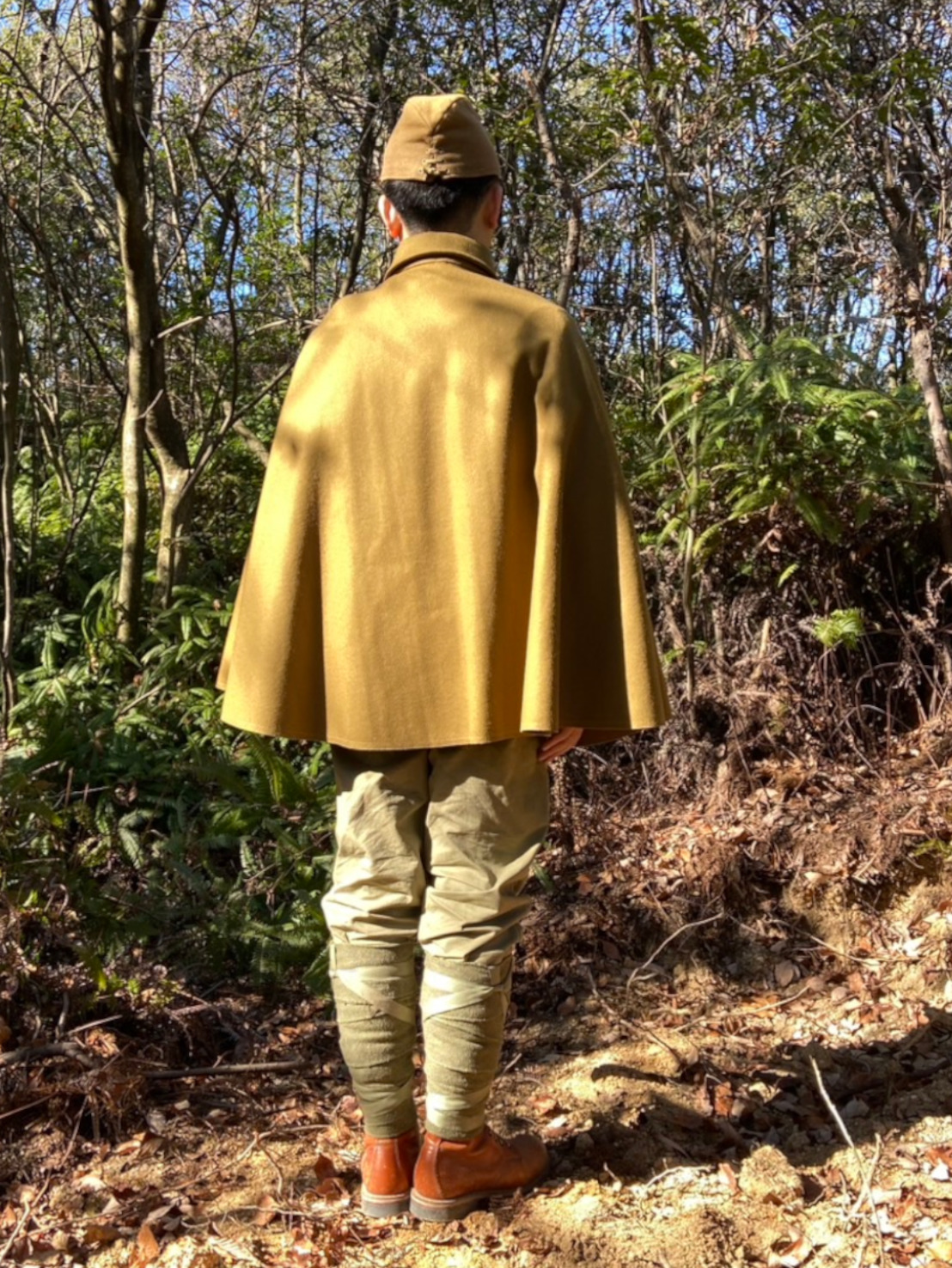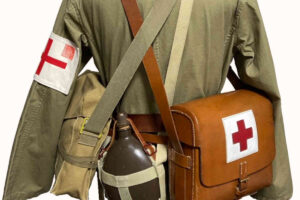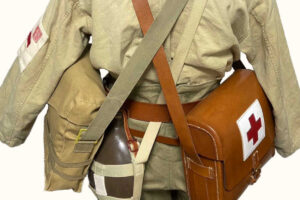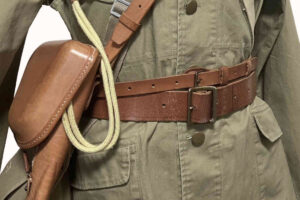This is an example of a military police (憲兵/Kempei) non-commissioned officer wearing the Type 98 Summer Tunic. In the case of the Japanese Army, the lowest rank for military police is Senior Private, so care must be taken when recreating this.
To become a military police officer, one had to apply to and graduate from the Military Police School (Kenpeitai Training Unit) after serving in a general branch of the military. As of 1943 (Showa 18), it took approximately six months of training to become a Military Police Senior Private and about one year of education to become a Military Police Non-Commissioned Officer.
There’s a recommended book on the Japanese Army’s military police that I’d like to share. Although it’s a bit old, used copies are still available on sites like Japanese Amazon. The book is titled “Kenpei Yomoyama Monogatari: An Illustrated Essay by a Young Corporal1” and is part of the Kojinsha NF Bunko series. It recounts the experiences of Mr. Yamauchi, who rose from an Infantry Private Second Class to a Military Police Non-Commissioned Officer around 1943 (Showa 18). He later became an illustrator, and the book’s many drawings—done by the author himself—also serve as helpful visual references.
Interestingly, before volunteering for the military police, he served as a grenade discharger operator, and the book includes descriptions of that experience as well—making it a doubly valuable read for me. Since grenade discharger operators did not carry rifles, they would charge with the discharger in their left hand and a drawn bayonet in their right. I once saw a photograph of a soldier holding a grenade discharger and a bare bayonet, and reading this helped me realize that it was likely taken during a charge.
Basic Equipment
Let’s start with the basic equipment of a military police officer. They are equipped with a pistol and a military sword. The pistol would be either the Type 26 Revolver or the Type 14 Nambu, and the sword would be either the Type 32 or Type 95 Military Sword. A military police armband is worn on the left arm, though depending on the mission or situation, it may not always be worn. Also, the armband is worn only by non-commissioned officers and enlisted personnel—not by officers.
Due to the nature of military police duties, it is also acceptable to wear a large map case like those used by officers.
The special collar insignia for military police was established under Imperial Decree No. 5852 of 1940 (Showa 15). Prior to this, military police wore a black, “M”-shaped insignia on the right chest. However, with the enactment of this ordinance, the branch-specific “M” insignia was abolished, and such insignia were retained only for service branches. Since the military police do not belong to a specific service branch, the “M” insignia was discontinued. Therefore, only the special collar insignia should be worn. When recreating a military police uniform, it’s important to avoid the common mistake of attaching both the “M” insignia and the special collar insignia.
The correct placement of the special insignia is 15 millimeters from the collar insignia, as shown in the diagram.
For beginners, the method of suspending the military sword may be a bit confusing, so I’ve included detailed photos for reference. The leather strap used to suspend the sword should be arranged so that the glossy grain side (the silvered surface) is visible on the outside. As a result, the strap appears slightly twisted. The white cloth wrapped around the grip is originally intended to prevent slipping when held, but it also serves the secondary purpose of protecting the sword from scratches when it bumps against items like the canteen during outdoor wear—so it’s a practical two-in-one solution.
The sword used is either the Type 32 or the Type 95 Military Sword. Even around 1943 (Showa 18), older Type 32 swords were still frequently issued. The Type 32 comes in two variants: Kō (甲), the cavalry version, which is about 6 cm longer, and Otsu (乙), the general-purpose version. According to Mr. Yamauchi’s essay, they would choose the longer or shorter version based on their height, though they didn’t use terms like Kō or Otsu. It’s one of those common cases where modern collectors like to classify by precise model types, but those who actually used the equipment at the time didn’t pay much attention to such distinctions.
As for the Type 32 Military Sword, I own both a replica and an authentic one with a cut blade, so I plan to introduce those in a separate post at a later date.
When Armed with a Carbine
Next, let’s look at the equipment used when deploying in an armed capacity. Military Police mainly used carbine, not rifle. When carrying a carbine, military police would wear cavalry-type ammunition pouch. Judging from period photographs, this pouch was often threaded through the pistol belt. If you attach the pouch on the main belt, the pouch sit quite low, which doesn’t match the positioning seen in some photos.
In addition to carbines, there are also photographs showing military police deployed with light machine guns. Interestingly, even when carrying a light machine gun, they still wore their military swords properly suspended.
The cavalry ammunition pouch I use is a replica made by Dekunobo. The color tone and texture are excellent—it’s one of my favorite items.
Inside the pouch lid, you’ll find a cleaning rod (an L-shaped rod) and a bore brush (a spiral-shaped rod). The bore brush is an authentic piece, while the cleaning rod is a replica. Be cautious when storing these brass components in the pouch, as moisture from the leather can cause green corrosion. It’s a good idea to insert rods to maintain the pouch’s shape—disposable bamboo chopsticks from convenience stores are a perfect fit and highly recommended.
Recently, cavalry ammunition pouches have also become available from HIKISHOP, making them easier to obtain.
Military Police Cape
When it comes to military police, the iconic item is undoubtedly the military police cape. This one is a replica by Nori. It actually comes with a detachable hood that attaches with buttons—but I forgot to put it on during the photo shoot.
According to Mr. Yamauchi, people around him used to call it the “squid cape” (ika-manto) because the hood flaps looked like the fins on a squid’s head.
Accessories
In addition to standard gear, military police carried several items unique to their duties. In particular, the three items — the Military Police Badge, Whistle, and Restraining Rope — appear to have been mandatory to carry when serving as a Military Police.
- Military Police Badge (Kempei-techō)
- Similar to a police officer’s badge, it was kept in the left breast pocket. A batch of replica badges ware apparently produced by someone, and I came across one on Yahoo Auctions around 2020 and purchased it then.
- Whistle (Kotekki)
- A drum-shaped metal whistle, stored in the right breast pocket. The whistle cord is tied to the button that secures the pocket flap. Modern metal whistles are available, so it’s fairly easy to find a suitable alternative.
- Restraint Rope (Hojō)
- A roughly 5mm thick, 2.5-meter long hemp rope, coiled into about a 10cm bundle and kept in the right pocket of the trousers.
- Gloves (Tetō)
- Military police often wore white gloves while on duty. Modern white gloves are easily accessible and make for a visually striking accessory when recreating the uniform.
Uniforms and Field Gears Used
- Late Type Field Cap (Replica / Nori)
- Type 98 Summer Tunic (Replica / S&Graf / Custom-Modified Original)
- Sergeant Rank Insignias (Replica / Nori)
- Military Police Armband (Replica / Manufacturer Unknown)
- Military Police Special Insignia (Replica / Manufacturer Unknown)
- Soldiers’ Leather Belt (Replica / S&Graf)
- Type 14 Nambu Pistol Holster (Replica / HIKISHOP)
- Pistol Belt (Replica / Manufacturer Unknown)
- Pistol Lanyard (Replica / Soshu)
- Cavalry Ammunition Pouch (Replica / Dekunobo)
- Type 95 Military Sword (Replica / PK Militaria)
- Military Police Cape (Replica / Nori)
An Example of Wearing
This is an example of how the uniform is actually worn during an airsoft game. Ideally, wearing NCO leather boots looks more impressive, but of course, the combination of lace-up boots and field wool leggings is also perfectly accurate. Since authentic NCO boots are rare and not very practical for movement, I don’t wear them during games. I actually own two pairs of NCO boots, so I’d like to introduce those another time.
Footnote
- Issei Yamauchi, Kenpei Yomoyama Monogatari: Wakaki Gochō no Irasuto Essei (Kojinsha Nonfiction Bunko 416), Kojinsha, 1988. ↩︎
- “Original signed document, Showa 15, Imperial Decree No. 585, Amendment to the Army Uniform Regulations“, JACAR (Japan Center for Asian Historical Records) Ref. A03022498500; Original signed document, Showa 15, Imperial Decree No. 585, Amendment to the Army Uniform Regulations (National Archives of Japan). ↩︎
